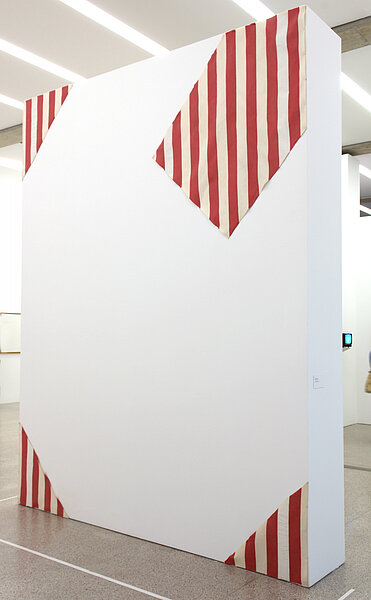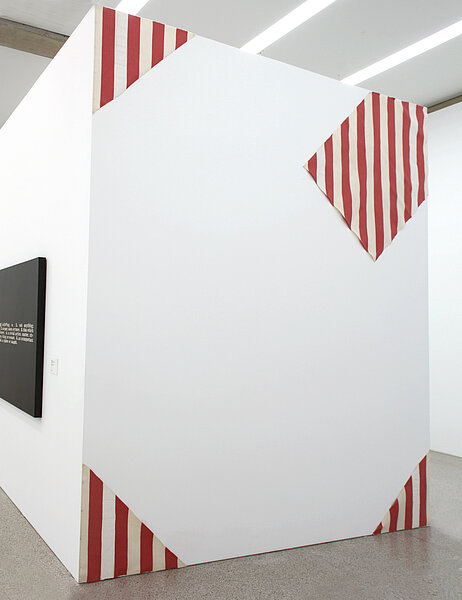
Buren, Daniel
Une peinture en 4 élements pour un mur
1980
| Object description | 4-parted wall object from fabric |
|---|---|
| Object category | sculpture |
| Dimensions |
Objektmaß:
height: 146 cm,
width: 140 cm
|
| Year of acquisition | 1994 |
| Inventory number | B 841/0 |
| Creditline | mumok - Museum moderner Kunst Stiftung Ludwig Wien |
| Rights reference | Buren, Daniel |
At the end of the 1960s Daniel Buren turned away from classical painting. His work was centred on questions of authorship, claims of originality, and the social and political function of art. Buren criticized the formalism of post-war painting and the role of museums which played a powerful role in the process of establishing art. His decision to ban his own artistic handwriting from his works was related to the hope of a kind of cultural revolution: no work of art, wrote Buren in his theoretical texts, can escape the system and no creative artist can remain independent as long as they work together with institutions. Soon Buren replaced his originally painted pictures with awning fabrics. The basic motif of vertical coloured and white stripes that are always 8.7 cm wide is his raw material. For Buren the stripe motive is a “visual tool which, as a reproducible signifier without a message in its own right, is intended to mark and question all variable conditions.” It can take on the function of a picture on the wall, or temporarily occupy public space. The striped fabric changes the perception of the architecture and the room, they give each other meaning. And so it is with the work from the mumok collection: cut from a square piece of cloth, the four pieces must be mounted at the corners of a wall. The size of the work depends on where it is presented. In return the wall has to accept the artwork in the way that has been predetermined: the bigger the wall, the bigger the artwork.
© mumok – museum moderner kunst stiftung ludwig wien

